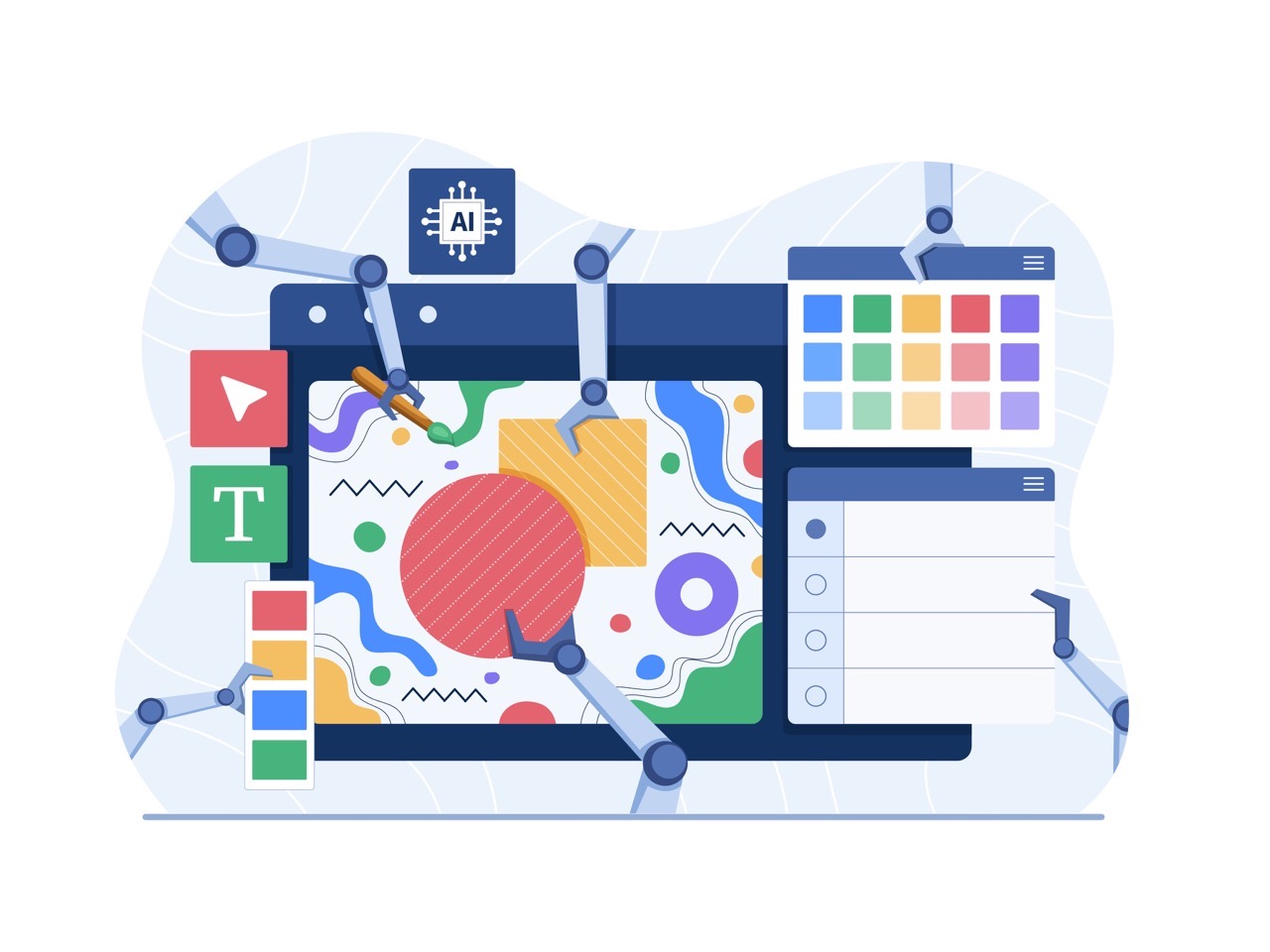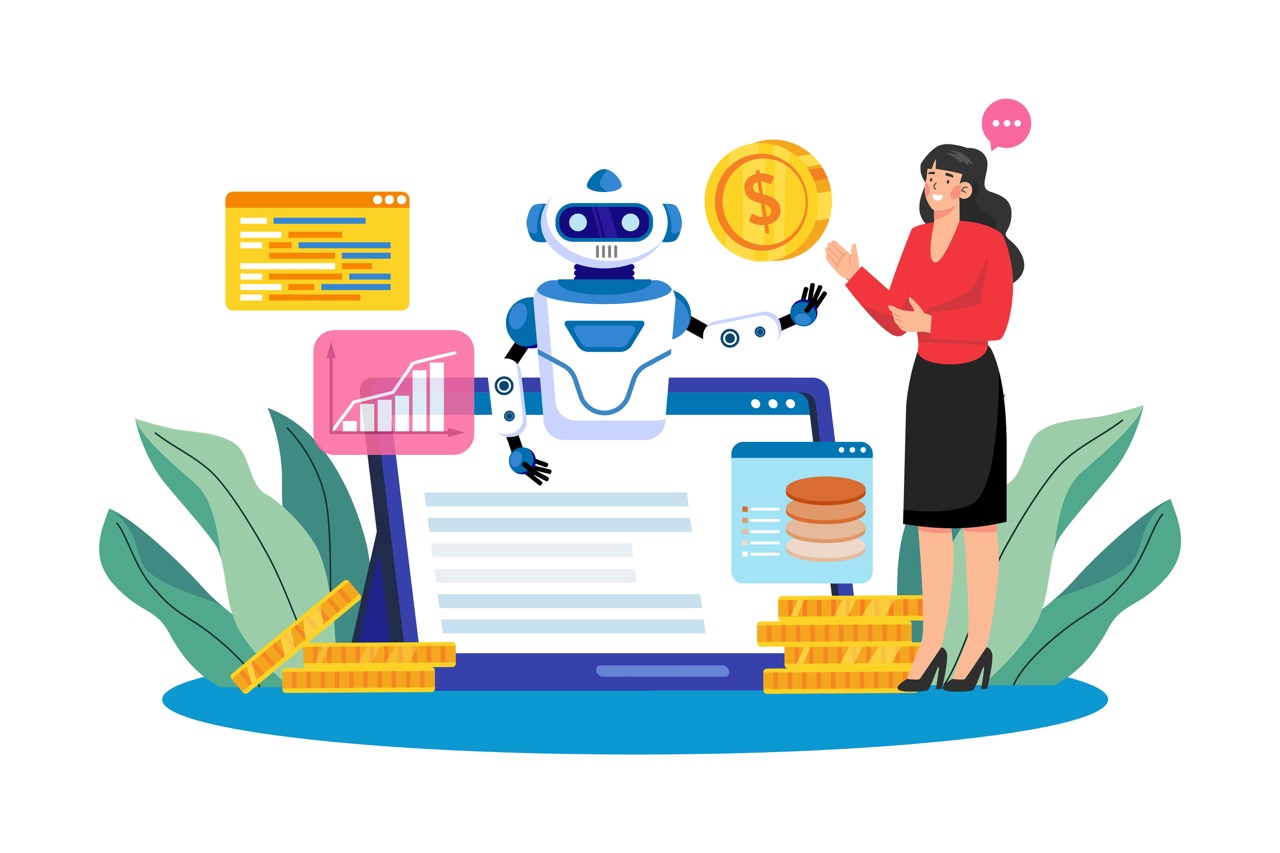UX and AI – Good or Bad Idea? Delving into Our UX Designer's Perspective
Maja Piekarczyk
5 min of reading
As a UX designer in a cutting-edge tech company, I've been right in the action, witnessing AI's dynamic influence on changing digital products. I've been pondering: Is the marriage of UX and AI truly a game-changer? And where does this collaboration's journey lead?
But that's not all – I’ve tried to explore the potential rewards and risks that come our way. Curious to dive in? Your answers await just below!
The Dynamic Duo
Both User Experience (UX) and Artificial Intelligence (AI) have become a very important and integral part of the current digital world. Both have revolutionized the way people interact with technology. UX is all about enhancing user satisfaction by improving usability, accessibility and pleasure while interacting with a product. AI, on the other hand, is the replication of human intelligence in machines.
Taking advantage of AI’s strengths while working in any area has many benefits and facilitations. The combination of UX and AI is one of the biggest trends with a significant potential to revolutionize the world of digital products. Such a combination can enhance the overall user journey and improve product performance. However it also comes with some challenges and concerns.
Is UX and AI together a good idea? The answer is not simple. Let's explore this connection and check how this fusion can work.

The positive aspects of combining UX and AI
1. Personalization
Thanks to AI we have the ability to analyze and collect data about users faster and easier than ever before. With such data we are able to better match the product and content to the individual preferences and behavior of users. All this affects the user's experience which can lead to better customer satisfaction and increased engagement.
2. Accessibility
It’s a challenge to make a good product that meets the standards of accessibility and inclusivity. But one of the advantages of AI is the possibility to make interfaces more accessible to people with disabilities by using AI-driven voice commands or gesture recognition.
3. Adaptive Interfaces
Based on various real-time data and user behavior AI is able to adjust and personalize interfaces. This data is collected by AI-powered algorithms which analyze user interactions and decisions. Based on that, interfaces can remain relevant and engaging to users as their needs and preferences evolve.
4. Automation
AI-based solutions allow to automate repetitive tasks while reducing user effort and enhancing efficiency. AI-powered chatbots that provide instant customer support or recommendation systems that help users discover relevant content - these are examples of how through AI, users can save time and improve overall productivity and efficiency.
By automating routine and repetitive tasks, AI allows UX designers to focus on more creative and strategic aspects of their work. This automation can speed up the design process, leading to faster product development and iterations, ultimately benefiting end-users with more frequent updates and improvements.
5. Predictive Analysis
AI can predict user preferences and actions based on large sets of historical data, interactions and patterns. These algorithms identify trends and correlations that allow the system to predict future user behavior and enables the interface to proactively offer relevant content.

The concerns and challenges of combining UX and AI
1. Loss of human touch
Human interactions are often marked by empathy and emotional support. AI-powered chatbots and virtual assistants might struggle to keep empathy and emotional intelligence needed in sensitive situations.
2. User alienation
There are many users who still prefer more traditional and straightforward interfaces. User alienation refers to disconnection or detachment that users may feel when interacting with AI-powered interfaces. Users may perceive such AI interactions as robotic and inauthentic which may translate into reluctance to use such solutions.
3. Lack of transparency
The way AI algorithms work and how AI makes decisions can be complex and unclear to most users. This lack of transparency can lead to distrust and a sense of detachment from the technology. Addressing such problem is crucial for ensuring user confidence, that’s why it might be a challenge for UX designers to make AI-driven experiences more transparent and controllable for users.
4. Bias and fairness
AI algorithms are trained and based on vast amounts of data from various sources, so if such data contains biases, AI can replicate and reinforce them. This could lead to discriminatory outcomes in many areas and for certain user groups. UX designers must carefully consider the ethical implications of using AI and work towards creating fair and inclusive systems.
5. Over-reliance on AI
Overreliance refers to excessive dependence on AI-driven solutions and AI algorithms. It can lead to blind trust and lack of empathy from the user experience. Keeping a balance between AI-driven solutions and human intervention is crucial for creating meaningful and empathetic user experiences.

My Practical Perspective as a UX Designer
Working as a UX designer, I recently started using the support offered by AI tools in my daily work, but I do it with great care.
There are already a lot of AI tools on the market that also facilitate interface design. One such tool is Framer, which is a no-code platform – this means that we can design interfaces and create advanced prototypes without using code. Another AI tool supporting the design process is Uizard, which based on the latest UI trends and our guidelines and ideas is able to design specific interfaces. AI tools, including the most popular ChatGPT, help me reach specific information and data that I collect in the research phase faster – this is the main application of AI in my work.
However, I treat it only as a support and addition. I believe that we should be careful and not take anything for granted, because as mentioned in the article, AI tools don’t have what people have – empathy and feelings, which are essentials for the work of a UX designer. In addition, tools like ChatGPT are based on information available on the Internet, which can be misleading.
There are more and more tools of this type and it’s certainly a great way to automate and make the work easier. However, I approach it with caution and I would use these solutions more as inspirations and ideas rather than as ready-made solutions to implement.
Wrap-up
Cooperation between UX and AI has both benefits and drawbacks. On one hand, when implemented thoughtfully, AI can significantly enhance user experience through better personalization and adaptive, accessible interfaces. On the other hand, there are legitimate concerns surrounding bias, transparency, and user alienation.
AI is a very powerful tool, which, if used in the right way by keeping the balance between AI algorithms and the human touch, might give us great solutions. With this approach UX and AI can create meaningful and positive experiences for all users.



